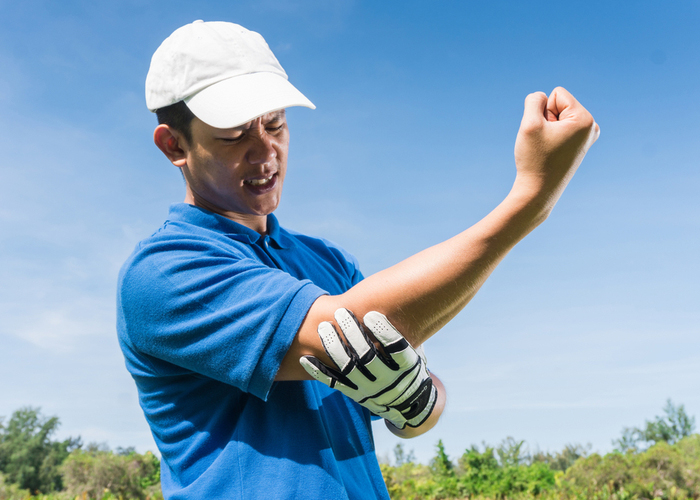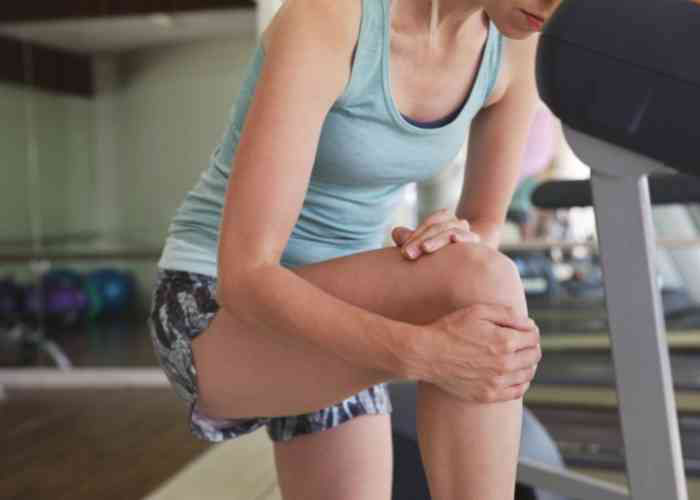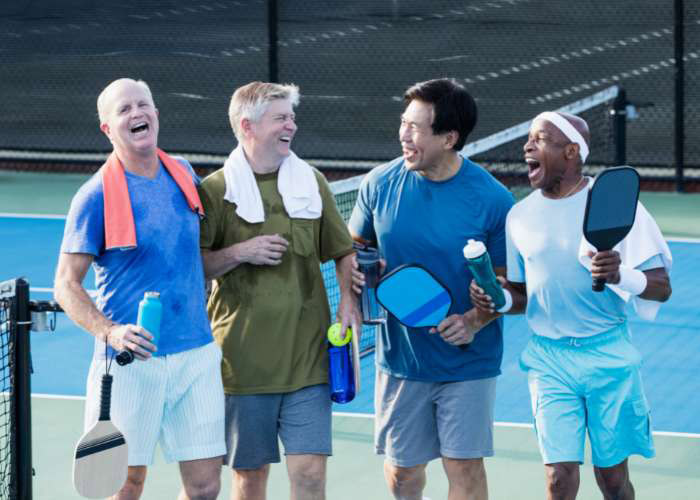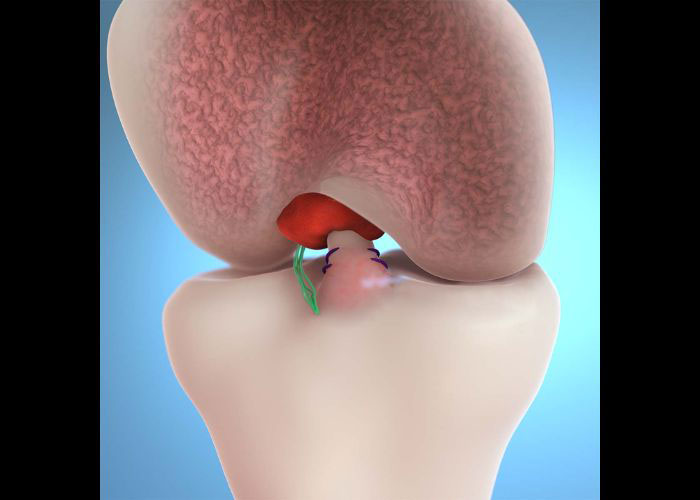What is golfer’s elbow?
Medial epicondylitis, more commonly known as golfer’s elbow, is a condition in which the tendons along the inner (medial) portion of the elbow become painful. The pain in the medial elbow tendons can often be pinpointed to the medial epicondyle, a bony prominence on the distal humerus (upper arm bone). This condition of golfer’s elbow is the result of repetitive forceful finger and wrist movements that cause excess stress on the tendinous sheath. As the name suggests, golfers are at risk of developing medial epicondylitis; however, the vast majority of patients with golfer’s elbow are not caused by sports-related activities. Dr. Ronak Mukesh Patel, orthopedic elbow specialist serving patients in Sugar Land, Pearland, and the Houston, Texas area, has the knowledge and understanding, as well as substantial experience in treating patients who have experienced golfer’s elbow or medial epicondylitis.

What is a flexor pronator tendon tear?
The anterior forearm muscles, known collectively as the flexor pronator muscles, are anchored to the medial epicondyle of the humerus by the common flexor tendon. This muscle-tendon group is responsible for finger, hand, and wrist flexion. Athletes that perform repetitive throwing motions, such as baseball and cricket players, are most susceptible to developing small tears in the common flexor tendon; although, a traumatic event such as a motor vehicle collision can also cause significant damage to the flexor pronator tendon. The resulting inflammation from these small tears is also known as medial epicondylitis (golfer’s elbow).

What causes golfer’s elbow?
Golfer’s elbow is brought on by performing repetitive forceful activities involving the forearm for more than an hour a day for several days. Golf and other racket sports as well as many occupations outside of sports can lead to the development of golfer’s elbow, including:
- Weight Training: Weightlifters and bodybuilders can develop golfer’s elbow by overloading the forearm muscles and tendons using an improper lifting technique.
- Throwing Sports: Medial epicondylitis can sometimes be referred to as pitcher’s elbow as the same medial elbow tendon is over-exerted by throwing a baseball or softball. Athletes that participate in other sports such as archery, javelin, and even football are also at risk of developing golfer’s elbow.
- Racket Sports: Tennis or racquetball players using a racket too small or too heavy can result in injury or tendon inflammation. Performing certain strokes, particularly the backhand, with poor technique can also lead to injury.
- Labor-Intensive Occupations: Jobs with heavy physical demands such as carpentry, plumbing, and construction can increase the likelihood of developing golfer’s elbow.
What are the symptoms of golfer’s elbow or medial epicondylitis?
Individuals with suspected golfer’s elbow frequently report pain and tenderness localized to the inner elbow. Some other common complaints of golfer’s elbow include:
- Wrist and hand weakness
- Elbow stiffness
- Numbness and/or tingling that radiates to one or more fingers
The pain associated with golfer’s elbow can occur suddenly or progressively worsen over time with repetitive movements. The following activities may worsen this pain:
- Swinging a golf club or racket
- Flexing the wrist
- Shaking hands
- Turning a doorknob
- Lifting weights
How is golfer’s elbow diagnosed?
A comprehensive medical history will be gathered by Dr. Patel and include any prior elbow injuries, underlying health conditions, work and sports-related activities, and current symptoms. A thorough physical examination will follow to assess the elbow’s range of motion and evaluate the elbow for areas of pain and tenderness. Diagnostic imaging studies, such as x-rays and magnetic resonance imaging (MRI), may be requested to identify any damage to the surrounding elbow structures. Nerve conduction studies and electromyography (EMG) may be requested by Dr. Patel to rule out nerve compression for patients with symptomatic nerve damage.
What is the treatment for golfer’s elbow or medial epicondylitis?
Prevention:
Because athletic and non-athletic individuals are at risk of experiencing golfer’s elbow, there are a handful of strategies that can help prevent this condition from developing altogether. A proper warm-up and cool-down routine should be established with any physical activity involving the elbow. Individuals that practice heavy lifting with sporting activities or work-related duties should use the correct form and proper lifting technique to avoid an injury. Maintaining forearm muscle strength can also help the muscles absorb the energy of sudden physical stress. The most important prevention strategy is knowing when to take a break. Golfer’s elbow develops from overuse of the forearm muscles, therefore taking a break at the first sign of elbow can help prevent golfer’s elbow.
Non-surgical treatment:
Patients with confirmed medial epicondylitis often respond well to conservative therapies alone. Modifying or avoiding activities that worsen the pain along with a combination of rest, ice, compression, and elevation can substantially decrease symptoms. The pain and inflammation can also be managed with non-steroidal anti-inflammatory medications (NSAIDs). A physical therapy program can also be beneficial for patients with lingering and persistent symptoms. Injections with corticosteroid or platelet-rich plasma have also been shown to be effective.
Surgical treatment:
Surgical treatment measures are rarely implemented for golfer’s elbow. However, the failure of conservative therapy options or patients with more severe or complex symptoms may necessitate surgical intervention. The open surgical technique is the standard treatment method for reattaching the tendon back to the medial epicondyle. Dr. Patel will review the patient’s medical history, activity level, and desired recovery goals to formulate an individualized treatment plan.
Golfer’s Elbow Specialist

Do you play racquet sports, golf, or have a job that requires repetitive, heavy, physical demands? If so you may be at risk of developing an injury in the elbow and forearm called Golfer’s Elbow. Golfer’s elbow specialist, Doctor Ronak Mukesh Patel, provides diagnosis as well as surgical and nonsurgical treatment options for patients in Houston, Sugar Land, and Pearland, TX who are experiencing the symptoms of golfer’s elbow. Contact Dr. Patel’s team today!








